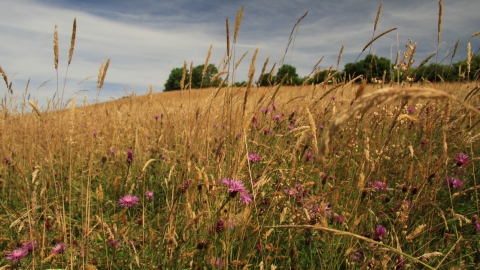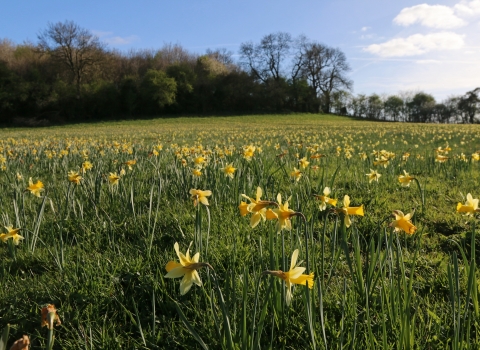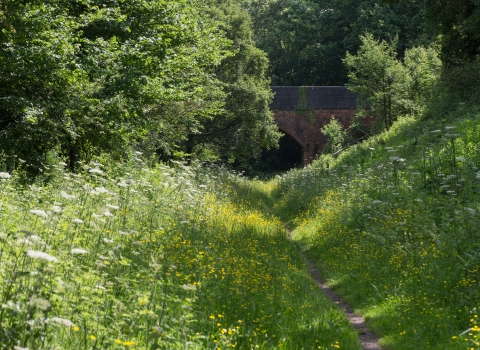
Hollybed Farm Meadows by Wendy Carter
Hollybed Farm Meadows
Know before you go
Dogs
When to visit
Opening times
Dawn to duskBest time to visit
April to JulyAbout the reserve
Nestled between historic Castlemorton and Hollybed Commons, this is our largest meadow nature reserve. One field, Far Starling Bank, is a Site of Special Scientific Interest because of its traditional hay meadow plants that include crested dog’s-tail, common knapweed, meadow vetchling, sweet vernal grass, yellow rattle, goldilocks buttercup, burnet saxifrage and wild onion. More locally uncommon species include adder’s-tongue fern, pepper saxifrage, southern marsh orchid and autumn ladies tresses. In 2013 we began the process of strewing hay from Far Starling Bank as a way of spreading seeds across the whole site. This has been working well and we are now seeing an increase in the number and variety of plants as the meadows begin to return to their former glory. Each year we donate seed from Hollybed Farm Meadows to help restore other meadows in the area.
To celebrate the 60th anniversary of the coronation of Queen Elizabeth II, Far Starling Bank became Worcestershire’s Coronation Meadow.
Visitors will discover an old orchard with mature pear trees in one field; we are restoring this as well as using it to help demonstrate traditional orchard management to local landowners. We planted 27 new local variety perry pear trees during winter 2013/4. The brook along the southern boundary is fringed by low-lying wet areas of grassland as well as a small alder carr woodland. There are moderate sized areas of scrub in the southern part of the reserve as well as mature hedgerows. We will manage these to maximise their benefit for wildlife.
The rich variety of plants support a wide range of insect life – from bees and butterflies to grasshoppers and crickets that, in turn, support a healthy bird and mammal life. We’ve added to the natural habitat by installing bird boxes around the reserve to help attract more birds.
In 2022 the presence of dormice within the nature reserve was confirmed for the first time. Footprint traps had been placed in a number of hedgerows and the distinctive footprints of these elusive mammals were discovered.
The reserve was purchased with help from the Esmée Fairbairn Foundation, The National Lottery Heritage Fund and members of the Trust.
Bigger, better and more joined up
This is one of a number of grasslands in the area - we believe that a landscape-scale approach to wildlife conservation is essential. Wildlife needs space to adapt and move to cope with the consequences of climate change. Practically, this means that we need our countryside to be bigger, better and more joined up to provide a coherent network of large areas linked by corridors that can provide benefits for people as well as for biodiversity.
In a pastoral landscape these scattered sites demonstrate how important each sensitively managed piece of land has become and we demonstrate their importance of protecting the existing wildlife value to encourage other landowners to manage their land and hedgerows less intensively. These small reserves lie within Natural England’s Severn and Avon Vales Landscape Area, and within the Worcestershire Wildlife Trust’s Malvern Chase Living Landscape.


